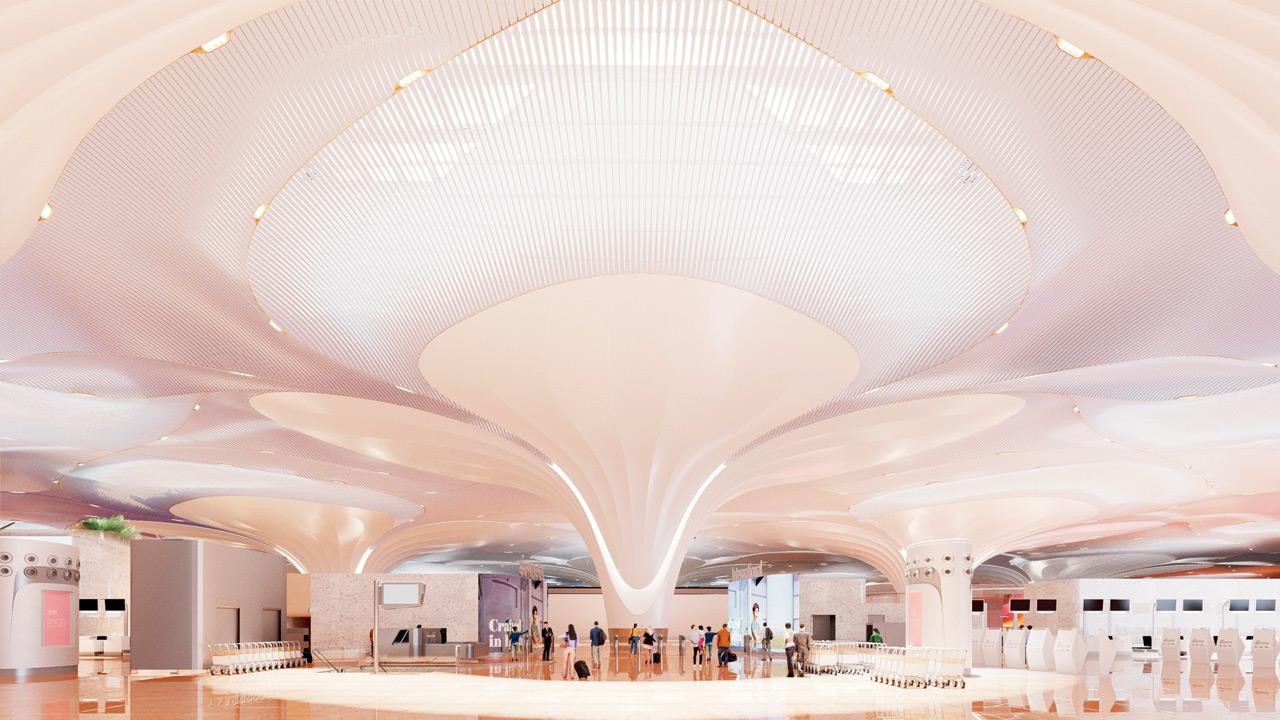As Navi Mumbai International Airport (NMIA) gears up for its scheduled inauguration, anticipation is running high. Billed as one of India’s most ambitious infrastructure projects, it promises not just to ease the pressure off Mumbai’s Chhatrapati Shivaji Maharaj International Airport, but also to transform its surrounding area into a business, financial, and connectivity hub. In this exclusive interaction with mid-day, an NMIA spokesperson (who did not wish to be identified) details the airport’s preparedness, last-mile challenges, passenger-centric innovations, and the roadmap ahead.
Excerpts:
NMIA is scheduled to begin operations on October 8. What percentage of work has been completed so far, and what last-minute preparations are currently being fast-tracked?
Navi Mumbai International Airport’s readiness is being guided by a comprehensive Operational Readiness and Airport Transfer (ORAT) programme. Through staff training, simulations, and on-ground support, every process, system, and facility is being tested and refined. This ensures that from Day 1, operations are safe, secure, and smooth — offering passengers a seamless travel experience right from the start.
Which facilities are still pending and may take more time to become fully functional even after the launch?
While the core passenger experience facilities will be fully functional, certain advanced services will be phased in. These include the Automated People Mover (APM) for internal transit (planned in Phase III) and some non-aero ecosystem projects. However, all essentials required for safe and efficient passenger handling will be in place from Day 1.
Have discussions been held with Navi Mumbai Municipal Transport, BEST, and app-based cab aggregators for dedicated airport routes?
Yes. NMIAL is actively collaborating with government authorities to integrate multi-modal connectivity. The airport will leverage both existing and upcoming infrastructure — including road, rail, and even waterways ensuring seamless access while decongesting traffic. NMIA is already acting as a catalyst for wider infrastructure growth across the Mumbai Metropolitan Region.
Will prepaid taxi and auto stands be provided at NMIA?
Convenience and accessibility remain at the core of NMIA’s design. Prepaid and app-based services will be integrated into a well-organised transport hub, ensuring smooth last-mile connectivity for passengers.
How is NMIA addressing the risk of bird hits, considering the presence of mangroves and water bodies nearby?
We have put in place a multi-layered wildlife hazard management system. This includes habitat management, where grass is kept below 20 cm, drainage upgrades are made to prevent waterlogging, and targeted interventions are made, such as using scarecrows in airfield vehicles.
Active deterrents such as predator sounds, bird distress calls, pyrotechnics, and scare devices will also be used. There will be real-time monitoring of bird activity, as well as coordination with municipal bodies within a 15 km radius to manage garbage and waste. Additionally, trained personnel will be stationed airside to deploy non-harmful deterrents.
What special arrangements are being made for disaster management, fire safety, and medical emergencies?
Passenger safety is paramount. NMIA will house an in-house fire station with crash fire tenders and trained firefighters capable of reaching any point within two minutes. A dedicated medical team with ambulances will be available round-the-clock, backed by tie-ups with leading hospitals.
How many check-in counters, baggage belts, lounges, and food courts will be operational from the first day?
There will be digitally advanced counters and self-check-in kiosks for faster processing; an ultra-fast baggage handling system, compliant with IATA 753 standards; a curated mix of Mumbai’s iconic street food, regional cuisines, international outlets, and fine dining, with digital ordering via Adani OneApp; and multiple premium lounges designed with comfort, exclusivity, and runway views.
What VIP and international traveller facilities will NMIA offer to differentiate it from other airports?
NMIA will stand out with a passenger-first design, blending luxury with digital convenience. Highlights include premium lounges with business pods, family zones, and free Wi-Fi; curated retail clusters combining luxury brands and local outlets; an Indian Food Hall showcasing authentic regional cuisines; and paperless, contactless travel through biometric boarding (DigiYatra).
As a new airport, what measures are being implemented for renewable energy, water conservation, and waste management?
Sustainability is integral to NMIA. Key initiatives include a 47-MW solar farm; rainwater harvesting across the site; terminal architecture designed for maximum natural daylight, reducing daytime power usage; low-flow fixtures for water conservation; and electric vehicles at the airside, with APMs planned in later phases for reduced emissions.
Will NMIA integrate AI-based systems such as biometric boarding, smart parking, or digital baggage tracking?
Absolutely. NMIA will feature biometric boarding via DigiYatra; smart parking with pre-booking and digital payments; real-time baggage tracking through IATA 753-compliant systems; the Adani OneApp, offering flight updates, parking assistance, gate alerts, meal pre-orders, and duty-free shopping; and the use of AI, machine learning, Internet of Things, and video analytics for predictive crowd and resource management.
How many direct and indirect jobs are expected to be created in Phase I?
Being a greenfield project, NMIA has already generated significant employment during construction. As operations scale, thousands of direct and indirect jobs will emerge across aviation, retail, logistics, and allied industries.
In what ways will NMIA contribute to positioning Navi Mumbai as a financial and business hub?
With a capacity of 90 million passengers annually once fully operational, NMIA will decongest Mumbai, create employment, and boost GDP. The surrounding NAINA (Navi Mumbai Airport Influence Notified Area) is planned for IT parks, warehousing, and real estate, making Navi Mumbai a parallel hub to Bandra Kurla Complex and Lower Parel.
Are dedicated hotels or service apartments being planned within or near the airport premises?
Yes. An 80-room transit hotel will operate inside the terminal. Beyond this, passengers can access retail outlets, dining courts, experiential zones, and entertainment options — turning NMIA into a destination in itself.
Roadmap for the future
According to the spokesperson, NMIA will expand in the following phases
Phase I & II
Terminal 1 + allied infra
20 MPPA * capacity
Phase III
Terminal 2
30 MPPA (cumulative 50 MPPA)
Phase IV
Terminal 3
20 MPPA (cumulative 70 MPPA)
Phase V Terminal 4
20 MPPA (cumulative 90 MPPA)
* million passengers per annum
90,000,000
No of passengers NMIA is capable of accommodating per annum











